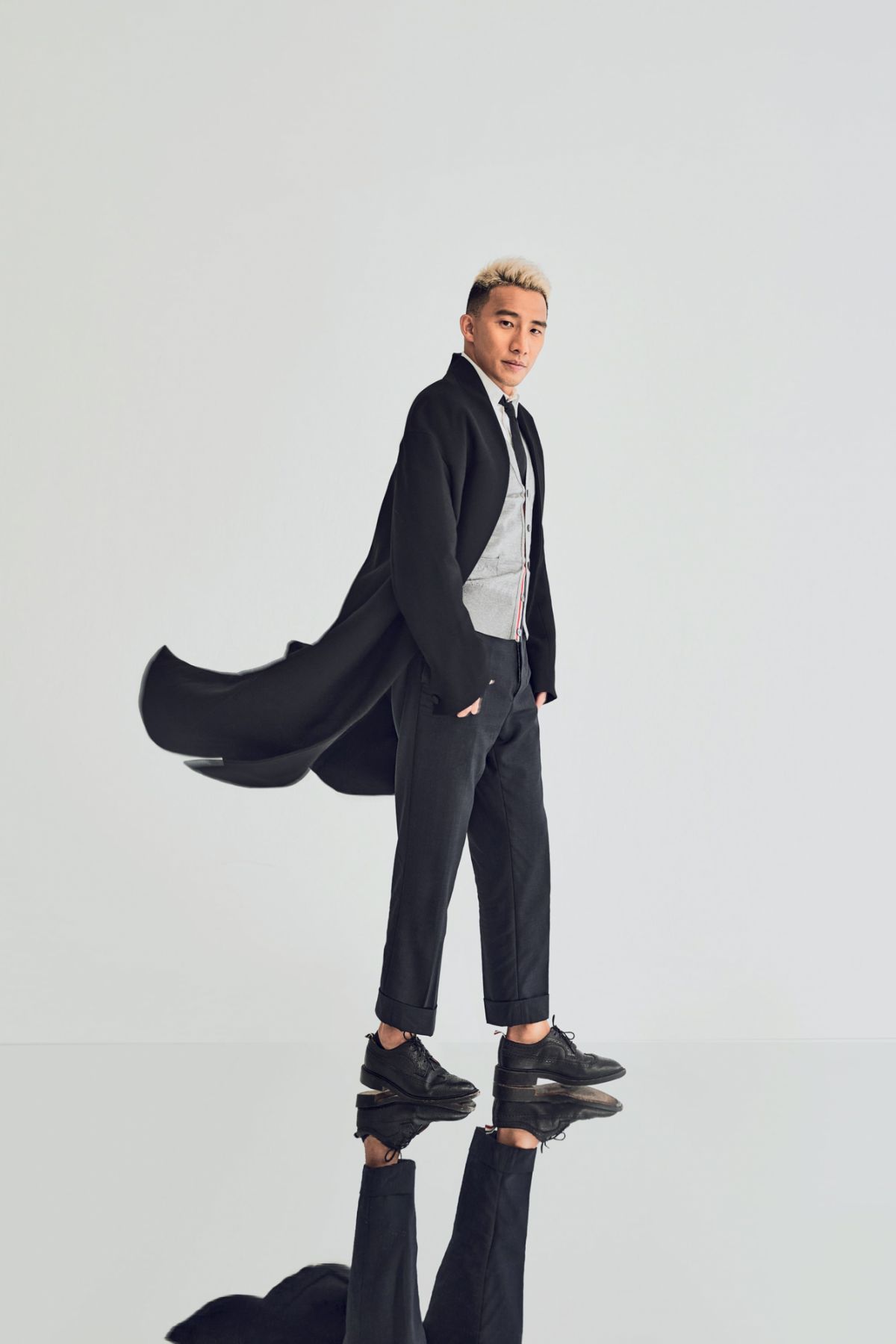Wesley Ng talks to Tatler about his lifelong entrepreneurial spirit, his obsession with Thom Browne suits, and how a tweet from a world-famous chef helped propel Casetify to success.
Wesley Ng was still a primary school student in Hong Kong when he started his first business. “I traded Dragon Ball Z cards. I used to make tonnes of money for a kid—I could buy whatever I wanted, like a Game Boy,” he says, laughing. “So I think the entrepreneurial spirit has always been inside me, but it started small.”
Ng’s ambition has grown since then.
The 40-year-old is now the co-founder and CEO of Casetify, the booming tech accessories brand that he established in 2011 with his school friend Ronald Yeung. To date, Casetify has sold more than 25 million phone cases worldwide and collaborated with more than 100 companies, ranging from designer labels such as Moncler and Saint Laurent to corporations like Disney and even museums—most famously the Louvre, which entrusted Casetify to transform the Mona Lisa from canvas onto iPhone cases, AirPod holders, water bottles and phone chargers.
These partnerships have made the brand a firm favourite of celebrities such as the Kardashians and the Hadids, and have also attracted huge media attention, marking the business out as a start-up to watch in Asia. Casetify is privately owned and Ng has never publicly discussed revenue, but a recent investment gives some idea of the company’s value: in June, Adrian Cheng, executive vice-chairman and CEO of New World Development, invested an undisclosed eight-figure US dollar sum in Casetify in exchange for a nearly ten per cent stake.
Don't miss: Why Adrian Cheng’s C Ventures Is Investing An Eight-Figure Sum In Casetify

From hustle to household name
So, as Casetify celebrates its tenth anniversary this month, Ng says he feels proud of everything his team has achieved so far—and is excited about what’s to come. “It is a big moment for us,” he says. “Now we’re at this mark, we have the luxury to do things we didn’t do in the past, which is expanding into different products, into different verticals, different business models. I have a lot of ideas.” Casetify itself came into being as the result of a very simple idea: that the iPhone was a great product, but the cases on the market were subpar. “When Steve Jobs gave his first keynote about the iPhone, in 2007, I thought, ‘Wow, this device is going to change the world’,” says Ng. “But phone cases back then were all bulky and ugly. There was no style whatsoever.” Ng knew he could do better. He was born and grew up in Hong Kong but moved to Australia to finish secondary school and study communication design at university, where he learnt about 3D animation, film, graphic design and more. “I’ve always been into art and design—I was always creative,” he says. “And I wanted a phone case that expresses who I am. I thought, ‘Wouldn’t it be great if I could turn all my Instagram pictures into a customised phone case?’”
Casetify—which first was called Casetagram—was born. “It was an interplay between software and hardware because we had to design the case and figure out the logistics of manufacturing, but at the same time we had to code our own app,” he says. “Our app was the first and the only one back then to let you customise your phone case with your Instagram photos.” International press including The New York Times, TechCrunch and Mashable picked up the story, hailing it as an innovative product. “We still had full-time jobs, so after work I was working with Ron on coding, design, shipping and answering all these customer service emails,” Ng says. “Those were the days—I was super tired, but it was super fulfilling.”
From the start, Yeung has overseen everything related to technology, while Ng manages product design, branding and marketing. Ng gave up his full-time job as head of digital and broadcast design at Now TV shortly after the launch. “One night, very randomly, our server was down. We looked into it and found out it was because there was massive traffic to our site,” he recalls. “There was a celebrity who picked up the story about Casetify and he posted on Instagram and on Twitter—it was Jamie Oliver. I have to give it to him: thanks to him, he killed the server and I said to my co-founder, ‘Hey, maybe we should quit our day jobs. Instead of treating this as a product, we should treat this as a business.’”
RT @jamieoliver: Hi guys i think this is a Cool web site if you keep dropping your phone like me http://t.co/1ILDLhpc Thanks for the love!
— CASETiFY (@Casetify) October 23, 2011
The company grew rapidly in the first two years, so much so that a string of copycat manufacturers sprung up, pushing Ng to move away from cases plastered with Instagram photos. Instead, Ng developed distinctive Casetify designs that people can customise in other ways, such as by emblazoning their names on their phone cases in hundreds of different fonts and colours. The brand has since further appealed to people’s vanity by releasing mirrored cases, some of which also incorporate glitter and other shiny, reflective materials that are as bright as Christmas baubles.
One of most famous fans of the mirror case is Kylie Jenner, who often poses with it in selfies for her 261 million Instagram followers. Other celebrities spotted with Casetify products include Taylor Swift, Dua Lipa and South Korean singer Jisoo, while actress Sarah Jessica Parker and superstar K-pop boy band BTS have collaborated with Casetify on their own collections.
Don't miss: This is How Much Your Favourite K-Pop Stars are Worth



